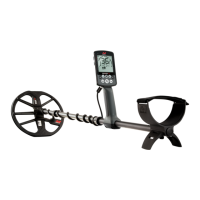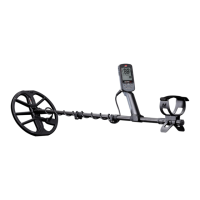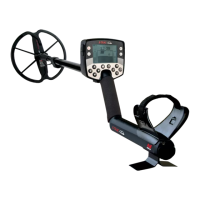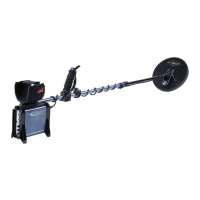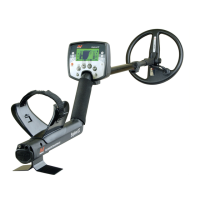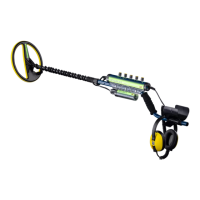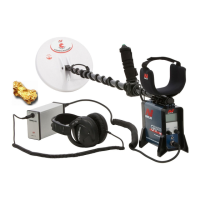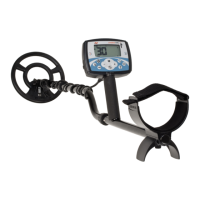Target ID Accuracy
Multi-IQ technology gives greater Target ID accuracy and increased detecting performance, especially in heavily mineralised ground. In
benign ground, a single frequency may perform adequately, however depth and stable Target IDs will be limited by ground noise.
Multi-IQ simultaneous multi-frequency will achieve maximum depth with a very stable target signal. In mineralised ground, single
frequencies will not be able to effectively separate the target signal from the ground signal, giving decreased results. Multi-IQ will still
detect at depth, losing a minimal amount of Target ID accuracy.
Typical Target Examples
While both the Target ID numbers and Discrimination Scale give a good representation of a target’s ferrous and non-ferrous properties,
desired and undesired targets can fall anywhere within the overall range from -9 to 40. Here are some common examples for good and
bad targets, showing the Tone Regions where they will likely be detected.
-9 to 0
Ferrous
1 to 10
Very Low Conductive
11 to 20
Low Conductive
21 to 30
High Conductive
31 to 40
Very High Conductive
2
1c
5
2c
19
10c
21
20c
22
50c
1
16
2
12
5c
12
5c
13
10c
16
20c
17
50c
21
$1
$2
35
50¢
29
25¢
25
10¢
13
5¢
21
1¢
30
$1
Gold nuggetsTiny gold nuggets Larger gold nuggets
‘Hot’ rocks
Nails, Screws
Copper SilverAluminium, Gold
Large silver coins
Foil
Small
hammered coins
Coke
Iron
Bottle caps
Modern Canadian coins
This is intended as a starting guide only. Target IDs may vary from the examples shown, depending upon the actual target metal
composition, ground conditions and detector settings.
26 20 to 3326 26
Conventional Single
Frequency
Conventional Single
Frequency
Target stability in mineralised soilTarget stability in benign soil
Multi-IQ
Multi-Frequency
Multi-IQ
Multi-Frequency
20 to 33 Ferrous
Target ID AccuracyDepth
26 26
Ferrous Not Detected26 27
Not Detected Not Detected27 20 to 33
Target ID & Discrimination | 31Contents
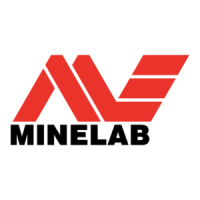
